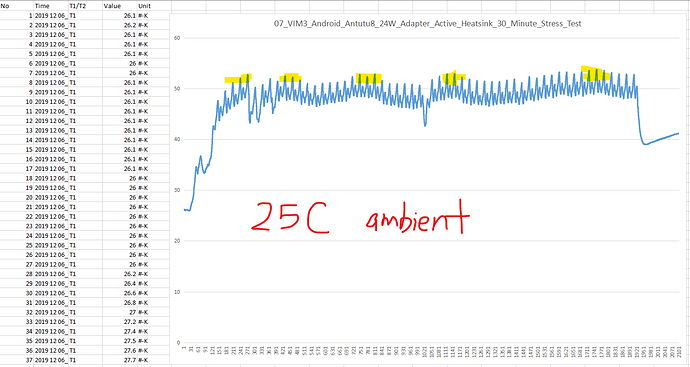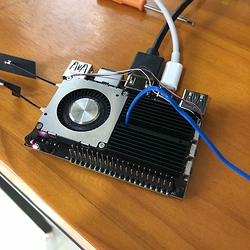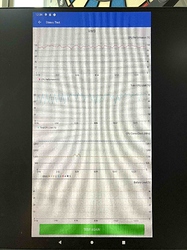With the “stock” Khadas 3705 Cooling Fan and New VIM Heatsink, the equilibrium temperature is around 51C, at 25C ambient, on the VIM3. This is again running the SoC at maximum load using the Antutu 8 stress test. Notice that due to the New VIM Heatsink’s small thermal mass, it reached equilibrium a lot faster than @RRZC777’s large passive heatsink.
This test only took 30 minutes, and the 3705 cooling fan was set to “automatic speed mode” from within Android. The sharp dips at the start of the test was myself placing my cold fingers onto the heatsink, notice that since my body temperature is around 37C, my fingers sucked heat out. The second sharp dip is myself restarting the test around the 15 minute mark.
@karibu active cooling would be the best option for your VIM3 cluster. I would only recommend passive cooling for the VIM3L.
-
VIM3 with fan and heatsink
-
30-minutes Antutu 8 stress test


